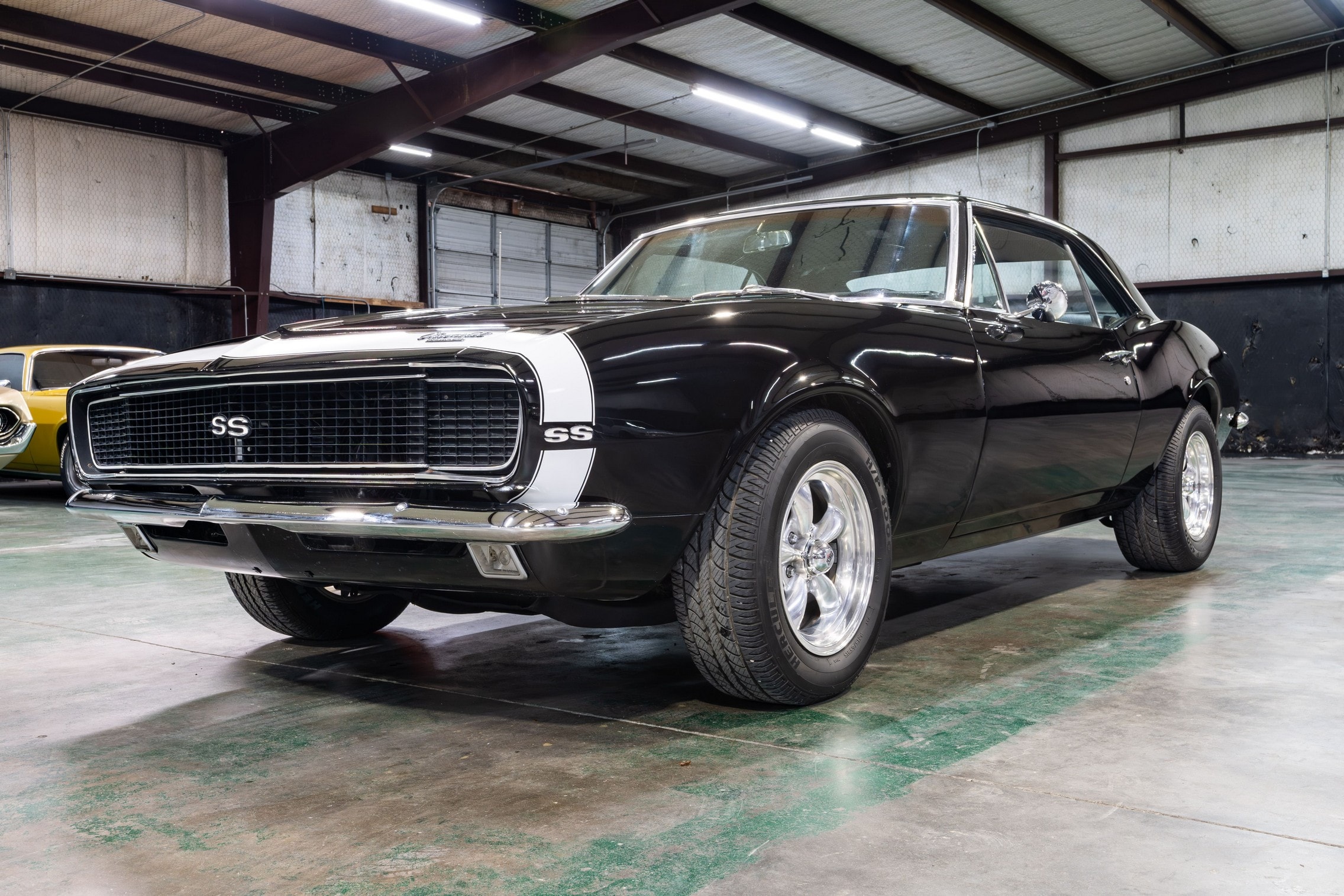In the early 1970s, spotting a Chevrolet Chevelle SS 454 at a red light meant you were up against one of the fastest cars on the road. Thanks to GM lifting its limit on engine sizes for mid-sized cars, the Chevelle was fitted with a massive 454-cubic inch (7.4-liter) V8, the largest engine ever used in a production car at the time.
With this powerful engine under the hood, the Chevelle SS could hit 0-60 mph in just 5.7 seconds, backed by 360 horsepower and about 500 lb-ft of torque—though these numbers were thought to be understated. Few cars of the era could compete with the raw power of the Chevelle SS, but there were a handful of rare, high-performance models from the 1970s that could hold their own against this GM heavyweight.
For this article, we’re focusing on the fastest version of the Chevelle SS, the 1970 model, and comparing it to other fast cars of the time. Data from reliable sources like ZeroTo60Times, Car & Driver, and Automobile Catalog has been used to rank these cars from the slowest to the fastest.
10) 1973 Porsche 911 Carrera RS 2.7 Touring The Iconic German Speedster
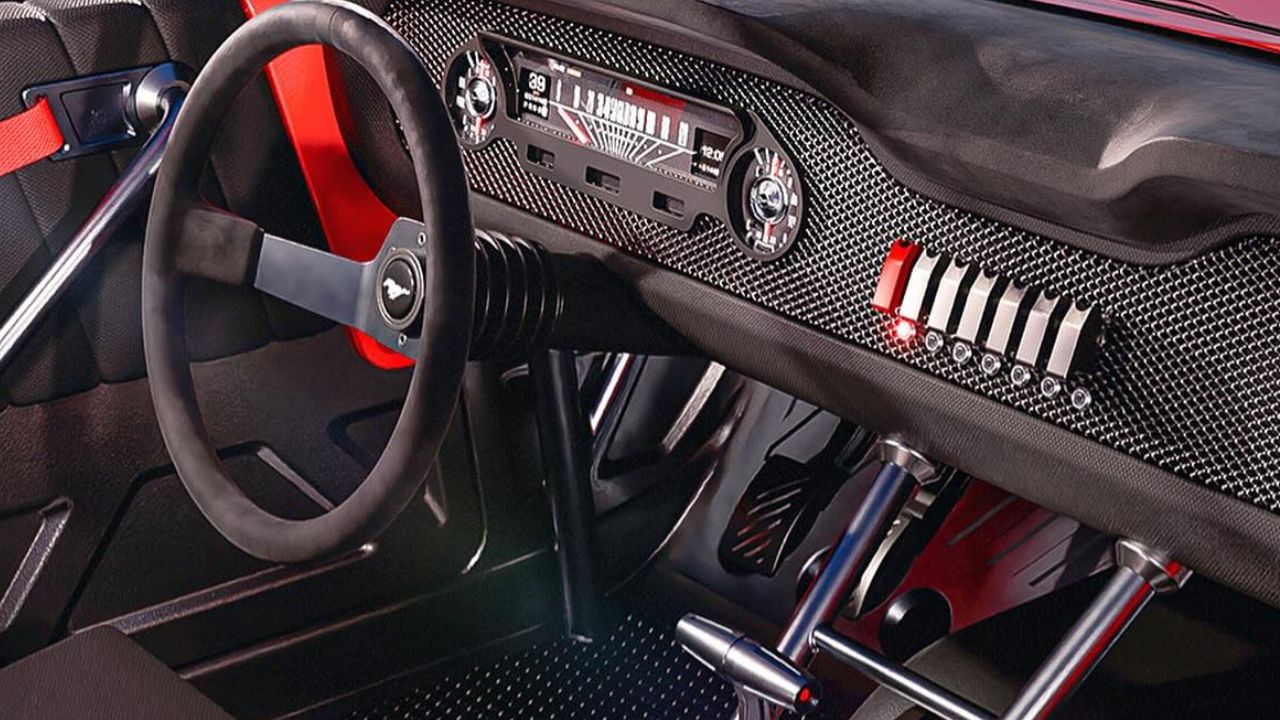
By the early 1970s, Porsche had shifted its focus from building small, agile sports cars to producing some truly fast machines. One of the most notable results of this evolution was the 1973 Porsche 911 Carrera RS 2.7, a car that remains one of the most iconic road cars Porsche has ever made.
At the time, this model was the fastest German production car, earning its place in automotive history. One of its standout features was its design, being the first production vehicle to include both front and rear spoilers. The rear spoiler, in particular, gave the car its famous nickname – the “duck tail.” This aerodynamic addition, along with other design tweaks, made the RS 2.7 not only faster but more stable at high speeds.
Initially, Porsche intended to produce only 500 units of the 911 Carrera RS 2.7 for Group 4 Special GT racing homologation. However, due to overwhelming demand, production was extended to 1,580 units, with 1,308 of those being Touring models. The Touring version offered a bit more comfort, bringing back some of the luxury features found in the standard 911 that had been removed in the racing versions. Even with these added comforts, it remained incredibly light, weighing in at just 2,370 lbs.
Under the hood, the 911 Carrera RS 2.7 packed a 2.7-liter flat-six engine, producing 207 horsepower and 188 lb-ft of torque. The increased power came from a larger bore compared to the previous 2.4-liter engine. This lightweight, powerful car could go from 0 to 60 mph in just 5.6 seconds and cover a quarter mile in 14.3 seconds, making it one of the most formidable sports cars of its time.
To this day, the 1973 Porsche 911 Carrera RS 2.7 is widely regarded as one of the most important models in Porsche’s storied history, cherished by collectors and enthusiasts alike for its speed, design, and lasting impact on the sports car world.
The Porsche 911 Carrera is a legendary sports car that has evolved over decades while staying true to its roots. Revered for its iconic design, precise engineering, and superb driving dynamics, the 911 Carrera represents the heart and soul of Porsche’s lineup.
First introduced in 1964, the Carrera has undergone numerous changes, but its basic formula—a rear-mounted flat-six engine, rear-wheel-drive layout (though all-wheel-drive versions are available), and a timeless silhouette—remains largely unchanged. Each iteration refines and improves upon this winning combination, making the 911 Carrera one of the most beloved and versatile sports cars in automotive history.
Under the hood, the current Porsche 911 Carrera is powered by a twin-turbocharged 3.0-liter flat-six engine. This engine produces 379 horsepower and 331 lb-ft of torque, providing plenty of power to propel the car from 0 to 60 mph in just 4 seconds when equipped with the automatic PDK transmission, or 4.2 seconds with the standard 7-speed manual transmission. The Carrera is capable of reaching a top speed of 182 mph.
Despite the turbocharging, Porsche has managed to preserve the distinctive character of the flat-six engine, with a linear power delivery and a familiar, satisfying exhaust note that makes driving the Carrera a thrill, no matter the speed.
The Carrera’s performance is impressive, but what truly sets it apart is the balance it strikes between daily usability and driving excitement. The car feels just as comfortable cruising through city streets or highways as it does carving up mountain roads or taking on a track. Porsche’s engineering expertise is evident in the Carrera’s handling, which remains sharp and responsive, thanks to the precise steering and rear-engine layout.
The rear-wheel-drive version provides a more traditional Porsche experience, while the Carrera 4 models add all-wheel drive for improved traction in a variety of driving conditions. Porsche’s adaptive suspension system, known as PASM (Porsche Active Suspension Management), comes standard, offering a range of settings from comfortable to sporty, allowing the driver to tailor the driving dynamics to their liking.
A defining feature of the 911 Carrera has always been its exceptional build quality, and the latest model continues this tradition. The car feels solid and meticulously crafted, with premium materials used throughout the cabin. The dashboard is a blend of traditional Porsche design and modern technology, featuring a central tachometer flanked by digital displays that provide customizable information.
Porsche’s PCM (Porsche Communication Management) system is also integrated, offering a responsive touchscreen interface with navigation, Apple CarPlay, and Android Auto compatibility. The fit and finish inside the 911 Carrera are impeccable, ensuring that every journey feels special, whether you’re on the track or running errands.
The interior of the 911 Carrera is also more practical than one might expect from a sports car. Although the rear seats are small and best suited for short trips or children, they can be folded down to provide extra storage space. The front seats, however, are comfortable and supportive, making long drives more enjoyable.
Porsche offers an array of customizable options for the interior, including leather upholstery, carbon fiber or wood trim, and upgraded seating options, allowing buyers to tailor the cabin to their preferences. The seating position is low and sporty, giving the driver a sense of connection with the road, while visibility remains excellent despite the car’s sleek profile.
One of the standout qualities of the 911 Carrera is how accessible it is to a wide range of drivers. It can be enjoyed by those looking for a weekend sports car, while also being suitable for those who want to use it as a daily driver. The PDK dual-clutch automatic transmission is smooth and quick, shifting gears with lightning speed in automatic mode, while offering full manual control through paddle shifters. For driving purists, the standard 7-speed manual transmission provides a more engaging and tactile driving experience. Whether you’re new to high-performance sports cars or a seasoned enthusiast, the 911 Carrera is easy to drive but offers plenty of room to grow as a driver, making it one of the most rewarding sports cars to own.
On the road, the 911 Carrera feels remarkably composed. The suspension manages to soak up imperfections in the road, delivering a ride that is firm but comfortable enough for everyday use. Even in its most aggressive driving modes, the car remains predictable and easy to control.
The steering is direct, offering excellent feedback, while the brakes are powerful and provide confidence-inspiring stopping power. The Carrera’s rear-engine layout might suggest that it would be prone to oversteer, but Porsche’s engineers have fine-tuned the chassis to be incredibly balanced, with excellent weight distribution and grip, especially when equipped with optional rear-axle steering.
The exterior design of the Porsche 911 Carrera is unmistakable. While Porsche has made subtle updates over the years to improve aerodynamics and modernize the look, the overall shape of the car has remained consistent, maintaining the sloping roofline, wide rear haunches, and round headlights that are instantly recognizable.
The latest 911 features sleek LED headlights and taillights, a retractable rear spoiler, and flush door handles that pop out when needed, giving the car a clean, futuristic look. Buyers can choose from a variety of exterior colors and wheel designs, as well as options like a sport exhaust system for an even more aggressive sound and look.
While the 911 Carrera is not the most extreme version of the 911 lineup (that honor goes to the GT3 and Turbo models), it is the most accessible in terms of price and everyday usability. However, this does not mean that it lacks in performance or excitement.
The Carrera is a car that can handle anything from spirited drives on twisty back roads to high-speed track days, all while maintaining the comfort and refinement needed for daily use. It is this versatility, combined with the car’s timeless design and engineering excellence, that has made the Porsche 911 Carrera a true icon in the automotive world.
The Porsche 911 Carrera continues to be a benchmark for sports cars, offering a blend of performance, refinement, and usability that few other cars can match. Its combination of a powerful yet accessible engine, sharp handling, and luxurious interior makes it a joy to drive in any setting.
Whether you’re looking for a daily driver or a weekend toy, the 911 Carrera delivers on all fronts, making it one of the most well-rounded and desirable sports cars on the market today. With its iconic design and Porsche’s commitment to innovation and performance, the 911 Carrera remains a symbol of automotive excellence.
9) 1970 Plymouth AAR ‘Cuda A Street-Ready Track Star
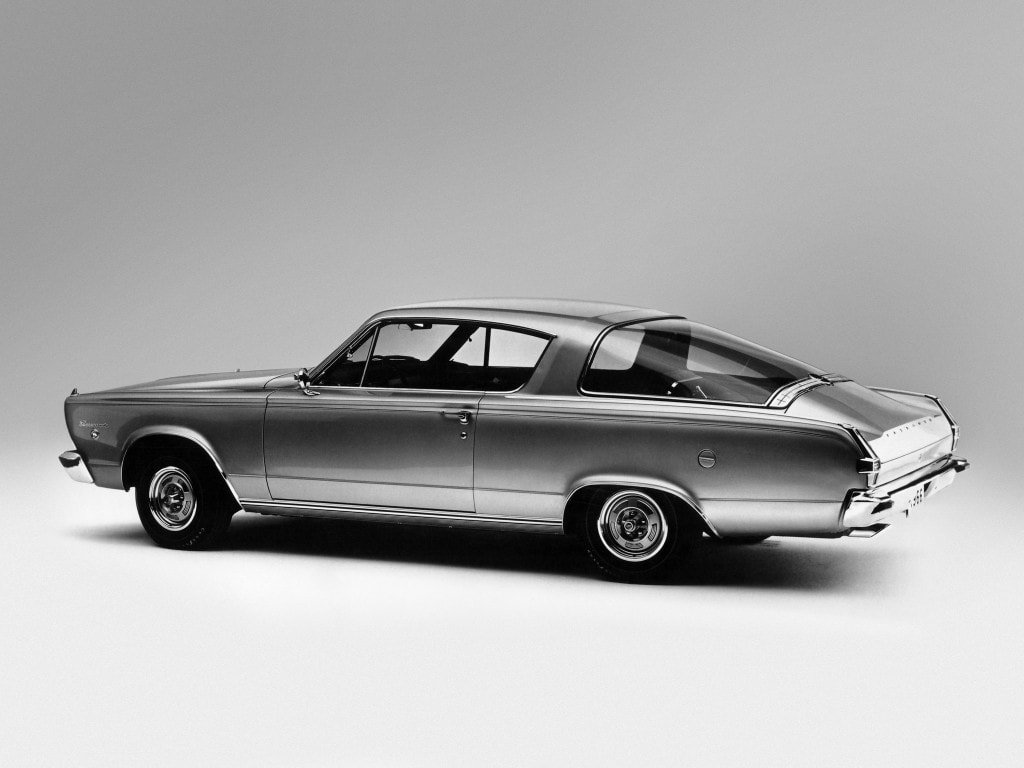
The 1970 Plymouth AAR ‘Cuda was built to meet the requirements for Dan Gurney’s All-American Racers team in the Trans-Am racing series. With just 2,724 units produced, it was a limited-edition car packed with track-oriented features. One of its standout elements was the lightweight fiberglass hood, which came with a central scoop to channel cool air directly to the engine.
Under that flat black, NACA-ducted hood sat a unique 5.6-liter V8 engine, delivering 290 horsepower and 350 lb-ft of torque. Buyers had the option of pairing this powerplant with either a 4-speed manual transmission or a 3-speed automatic.
The AAR ‘Cuda didn’t just excel in straight-line performance; it was designed to handle well too. It featured staggered tires, a distinctive black grille, side stripes, and a ducktail rear spoiler for better aerodynamics. Another cool feature was the side-exit exhaust, which set it apart from other muscle cars of the era. All these elements combined made the AAR ‘Cuda a standout both on the track and the street.
The Plymouth AAR ‘Cuda is one of the most iconic muscle cars from the golden era of American automotive history. Introduced in 1970 as a street version of the All American Racers (AAR) ‘Cuda that competed in the Trans Am racing series, the AAR ‘Cuda was a unique blend of race-inspired engineering and street-legal performance.
Its short production run and distinctive features have made it a highly sought-after collector’s item, cementing its place in the annals of American car culture. Built as a limited edition of the Plymouth Barracuda, the AAR ‘Cuda remains an unmistakable symbol of raw, uncompromising muscle car power.
The AAR ‘Cuda was named after Dan Gurney’s All American Racers (AAR) team, which competed in the Sports Car Club of America’s Trans Am series. To qualify for the series, manufacturers had to produce street versions of the race cars, which led to the birth of the AAR ‘Cuda. Under its hood was a 340 cubic-inch V8 engine, equipped with a trio of two-barrel carburetors, known as the “Six-Pack.”
The engine produced 290 horsepower, though many believed the actual output was higher, pushing close to 320 horsepower. While this powerplant might seem modest compared to some of the larger displacement engines of the time, it was designed for high-revving performance, offering explosive acceleration and impressive top-end power.
One of the defining characteristics of the AAR ‘Cuda was its lightweight construction and superior handling, making it more agile than its big-block competitors. The car’s 340 engine was lighter than the larger 440 or Hemi engines, providing a better front-to-rear weight balance.
This improved the car’s cornering abilities and made it more suited for road racing, rather than just straight-line speed like many other muscle cars of the era. The AAR ‘Cuda featured a special suspension setup with staggered rear shocks and front and rear sway bars, which helped improve stability and reduce body roll, making it a formidable opponent both on the street and the track.
Visually, the Plymouth AAR ‘Cuda stood out with its race-inspired styling. It sported a fiberglass hood with a functional hood scoop, which fed cool air to the Six-Pack carburetors, and distinctive matte black graphics that ran along the sides and across the hood.
The car also featured side-exit exhaust pipes that exited just in front of the rear wheels, giving it an aggressive, race-ready appearance. A unique feature of the AAR ‘Cuda was its staggered tire setup: it had larger tires in the rear (E60x15 at the front and G60x15 at the rear), which improved traction and gave the car a muscular stance. The combination of wide rear tires and a high rear spoiler emphasized the car’s performance-oriented design.
The interior of the AAR ‘Cuda was typical of muscle cars of the era, with a focus on functionality over luxury. It featured bucket seats, a basic dashboard layout with easily readable gauges, and an overall minimalist design.
While it wasn’t as plush as some other cars of the time, the interior still exuded a sense of purpose, fitting the car’s race-bred nature. The cockpit was driver-focused, with a simple and clean layout that kept the driver’s attention on the road ahead. Though the AAR ‘Cuda wasn’t built for luxury, it provided everything an enthusiast would need to enjoy the thrill of driving a performance car.
One of the most significant aspects of the AAR ‘Cuda was its limited production. Plymouth built only 2,724 units in 1970, making it a rare and desirable collector’s item today. Its connection to the Trans Am racing series, combined with its unique styling and performance capabilities, has made the AAR ‘Cuda one of the most valuable muscle cars from the 1970s. Collectors and enthusiasts highly prize original examples, and the car’s rarity has only increased its allure in the years since its production ended.
In terms of performance, the AAR ‘Cuda could hold its own against many of its larger-engined competitors. The car’s lightweight design, combined with its high-revving 340 Six-Pack engine, allowed it to accelerate from 0 to 60 mph in just over six seconds, which was impressive for the time.
Its quarter-mile performance was equally respectable, clocking in at around 14.4 seconds. While it might not have had the brute force of the Hemi ‘Cuda or other big-block muscle cars, the AAR ‘Cuda offered a more balanced driving experience that appealed to enthusiasts who valued handling and agility as much as straight-line speed.
The legacy of the Plymouth AAR ‘Cuda goes beyond its performance and rarity. It represents an era when American manufacturers were pushing the boundaries of performance engineering, blending racing technology with street-legal muscle cars.
The AAR ‘Cuda’s development for the Trans Am series gave it a direct connection to motorsports, a rarity for most muscle cars of its time, which were generally designed for drag racing or pure power. This racing pedigree, combined with its unique styling and high-performance capabilities, has made the AAR ‘Cuda one of the most enduring and beloved muscle cars from the 1970s.
The Plymouth AAR ‘Cuda is a true American muscle car icon. With its race-inspired engineering, distinctive styling, and limited production, it has achieved legendary status among car enthusiasts and collectors alike. Its combination of agility, lightweight construction, and high-revving power made it a standout performer on both the street and the track.
Today, the AAR ‘Cuda remains one of the most sought-after muscle cars from the golden era, and its legacy as a high-performance machine with racing pedigree is firmly entrenched in automotive history. The AAR ‘Cuda’s impact on the muscle car world continues to be felt, and its rarity ensures that it will remain a prized collector’s item for generations to come.
8) The Underrated Gem 1976 Lamborghini Urraco P300
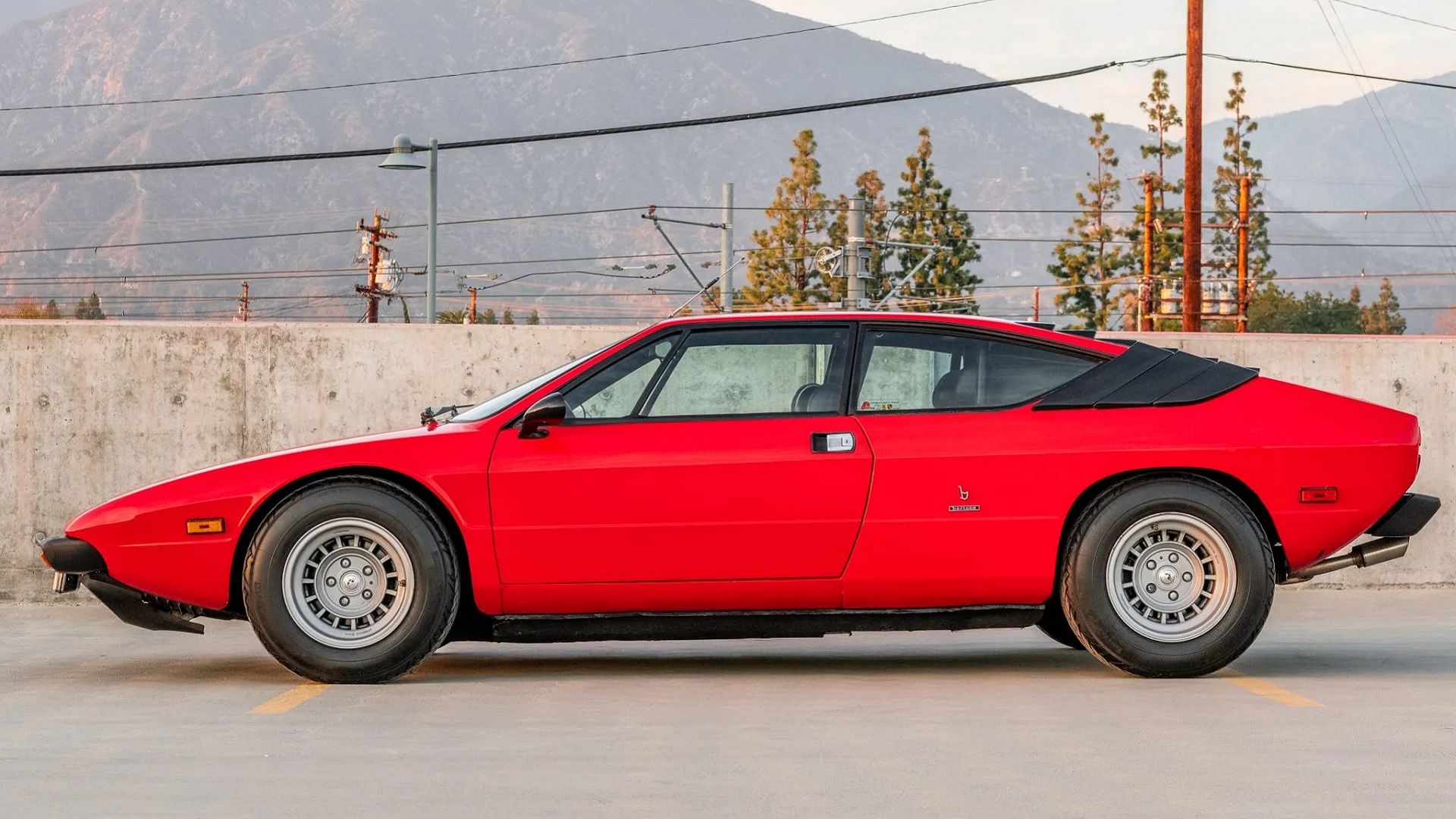
In the past, a Lamborghini Urraco could be found for around $20,000, even in running condition. However, this smaller Lamborghini model, which was initially overlooked due to the popularity of its larger V12 siblings like the Countach and Murciélago, has since gained appreciation. Today, prices for the Urraco have soared into six figures, reflecting its newfound status among enthusiasts.
Designed by Marcello Gandini, the Urraco made its debut in 1970 as the P250, powered by a mid-mounted 2.5-liter V8 engine. In response to Italian government regulations limiting engine capacities over 2 liters, Lamborghini introduced the P200 variant, which complied with these restrictions.
The most powerful version of the Urraco was the P300, equipped with a 3.0-liter DOHC 16-valve V8 engine. While it may have been underappreciated in its time, the Urraco laid the foundation for future models like the Lamborghini Jalpa, which took on a more aggressive design. Though it was once overshadowed by its larger counterparts, the Urraco’s sleek design and strong performance have earned it a lasting place in Lamborghini’s history.
The Lamborghini Urraco P200 is a pivotal model in the history of the Italian automaker, marking its entry into compact sports cars during the 1970s. Launched in 1972, the Urraco was Lamborghini’s first attempt at a smaller, more accessible model aimed at a broader audience, diverging from the company’s tradition of producing high-powered supercars. The P200 variant was particularly significant, featuring a well-balanced combination of power and agility, and is remembered for its innovative design and engineering, which contributed to the brand’s legacy in the automotive world.
At the heart of the Urraco P200 lies a 2.0-liter V8 engine, a departure from the larger V12 engines commonly associated with Lamborghini. This engine produced approximately 200 horsepower, enabling the Urraco P200 to accelerate from 0 to 60 mph in around 6.5 seconds, which was impressive for its time.
The V8 engine was designed with a focus on reliability and responsiveness, offering a more manageable driving experience while still delivering the performance that enthusiasts expected from a Lamborghini. The sound produced by the engine was distinctively sporty, echoing the brand’s racing heritage and providing an exhilarating driving experience.
One of the standout features of the Urraco P200 is its design. The car was styled by Marcello Gandini, the same designer behind other iconic Lamborghini models like the Miura and Countach. The Urraco’s low, aggressive stance and sharp lines showcased a modern aesthetic that was both functional and appealing
. The car featured a long hood and a short rear, typical of sports car design, but it also included unique elements such as the distinctive pop-up headlights and a sleek profile that set it apart from its contemporaries. This combination of style and aerodynamic efficiency helped enhance its performance on the road.
The Urraco P200 was also notable for its innovative engineering solutions. The car featured a rear-mounted engine, which provided an ideal weight distribution for improved handling.
The suspension system was a combination of independent front and rear setups, which contributed to the car’s agility and responsiveness on various road surfaces. Additionally, the Urraco was equipped with disc brakes all around, ensuring effective stopping power even at higher speeds. These features combined to create a driving experience that was engaging and rewarding, making it a favorite among sports car enthusiasts.
Inside, the Urraco P200 maintained a driver-focused environment, featuring comfortable seating and a layout designed for performance driving. The interior was relatively minimalistic compared to more luxurious models, reflecting its purpose as a sports car.
The dashboard was equipped with essential gauges, including a tachometer and speedometer, keeping the driver informed during spirited driving. While the materials and finishes were not as opulent as those found in other luxury cars, the emphasis was on functionality and driving enjoyment, which resonated well with its target audience.
Although the Urraco was designed to be more accessible than Lamborghini’s flagship models, it was still a high-performance vehicle that commanded attention on the road. Its compact size made it easier to maneuver compared to the larger Countach, making it a practical choice for driving in urban environments.
The Urraco also boasted a respectable trunk space for a sports car, allowing drivers to use it for longer trips without sacrificing too much practicality. This blend of performance and usability made the Urraco P200 an appealing option for those seeking a thrilling driving experience without the extreme nature of larger Lamborghini models.
Production of the Urraco P200 was relatively limited, with only a few hundred units manufactured during its run. This rarity, combined with its unique place in Lamborghini history, has made it a sought-after classic among collectors.
Enthusiasts appreciate the Urraco for its role in shaping Lamborghini’s identity as a manufacturer of high-performance sports cars while also paving the way for future models. The P200 variant, in particular, holds a special place in the hearts of those who admire the brand’s commitment to engineering excellence and performance.
Over the years, the Lamborghini Urraco P200 has garnered a dedicated following. Classic car enthusiasts often highlight its distinctive styling and engaging driving dynamics as key reasons for its appeal. Its position in the Lamborghini lineup as the first compact sports car adds to its historical significance, making it a compelling choice for collectors looking to own a piece of automotive history. Today, well-preserved examples of the Urraco P200 can fetch impressive sums at auctions, reflecting its status as a classic that embodies the spirit of the Lamborghini brand.
In terms of legacy, the Urraco P200 set the stage for Lamborghini’s future endeavors in the compact sports car segment. While it was ultimately succeeded by models like the Gallardo and Huracán, the Urraco’s influence can still be seen in contemporary offerings from the brand. Its emphasis on performance, styling, and engineering excellence continues to resonate with Lamborghini’s current philosophy, showcasing the company’s commitment to pushing the boundaries of automotive design and technology.
The Lamborghini Urraco P200 is a remarkable example of the brand’s innovative spirit and dedication to performance. With its distinctive design, engaging driving experience, and significant role in Lamborghini’s history, the Urraco P200 remains a beloved classic among automotive enthusiasts.
Its compact size and approachable performance make it a unique entry in the Lamborghini lineup, standing out as a testament to the brand’s ability to create high-quality sports cars that appeal to a wide range of drivers. As collectors continue to seek out this rare gem, the Urraco P200 will undoubtedly remain a cherished part of Lamborghini’s storied legacy for years to come.
7) 1978 Porsche 911 SC A Classic with Style and Performance

By the late 1970s, Porsche had made significant updates to its beloved 911, introducing the 911 SC, or Super Carrera, in 1978. This model replaced both the standard 911 and Carrera variants, offering a blend of performance, modern styling, and added comfort. The 911 SC would eventually be succeeded by the 911 Carrera in 1984, but during its production, it stood out for its advancements and design updates.
One of the most notable changes in the 1978 Porsche 911 SC was the increased engine size. The flat-six engine was now bumped up to 3.0 liters, giving the car a power output of 180 horsepower and 195 lb-ft of torque.
While 180 hp might not sound overwhelming by today’s standards, the lightweight design of the 911 SC made a big difference. Weighing only 2,557 lbs, the car didn’t need huge amounts of power to deliver a thrilling driving experience. The increase in torque, thanks to the larger engine, helped the 911 SC perform even better on the road.
In terms of acceleration, the 1978 911 SC could sprint from 0 to 60 mph in just 5.5 seconds and complete a quarter mile in 14.8 seconds. This made it a competitive sports car of its era, offering drivers a blend of speed and control that Porsche had become famous for.
The exterior also saw some modern touches. Porsche replaced the chrome window surrounds with sleeker black finishes, giving the car a more contemporary look. Additionally, the 911 SC came standard with 15-inch cast aluminum wheels from ATS, adding to its stylish yet functional design.
Beyond performance, the 911 SC introduced more creature comforts for drivers and passengers. These small improvements made it not only a capable sports car but also a more refined driving experience. This balance of style, performance, and practicality made the 1978 Porsche 911 SC a standout model during its time and a beloved classic today.
The Porsche 911 SC (Super Carrera), introduced in 1978, is an iconic model that helped define the 911’s reputation for blending thrilling performance with everyday usability. The SC represented a significant shift in Porsche’s strategy, as the company originally planned to phase out the 911 in favor of the Porsche 928. However, due to the SC’s immense popularity and critical acclaim, Porsche reversed course and ensured the 911’s continued production, making the SC a pivotal moment in the 911’s storied legacy.
The 911 SC is powered by a robust 3.0-liter flat-six engine, a major step forward from its predecessors. Producing 180 horsepower in its debut year, the SC underwent minor refinements, eventually reaching 204 horsepower by the end of its production run in 1983.
While these numbers might seem modest compared to modern sports cars, the SC’s lightweight construction and rear-engine layout gave it remarkable agility, enabling the car to sprint from 0 to 60 mph in under 6 seconds. Paired with a 5-speed manual gearbox, the 911 SC delivered a pure, engaging driving experience that remains highly regarded by enthusiasts today.
One of the SC’s standout features is its bulletproof reliability. Porsche engineers addressed many of the mechanical issues found in earlier 911 models, resulting in a more durable car that could handle both spirited driving and daily commutes. The introduction of an aluminum engine block and upgrades to the fuel injection system ensured the SC’s longevity, making it a favorite among collectors who appreciate a dependable classic. Many 911 SCs have easily surpassed 200,000 miles with proper care, a testament to Porsche’s engineering prowess.
The 911 SC is also known for its impeccable handling. Thanks to its rear-engine, rear-wheel-drive layout, and finely tuned suspension, the SC offers sharp, precise cornering capabilities. It also benefited from an improved chassis over previous models, giving it better stability and control. While the car’s tail-happy nature, caused by the rear-mounted engine, can be a challenge for inexperienced drivers, it’s this very characteristic that makes the 911 SC such a joy to drive for those who master it. The steering is unassisted, giving drivers a raw, connected feel with the road, further enhancing the car’s tactile feedback and overall driving pleasure.
Visually, the Porsche 911 SC maintains the classic shape that has made the 911 one of the most recognizable sports cars in the world. Its sleek, curvaceous body, round headlights, and wide rear fenders give it an athletic stance, while its compact proportions emphasize its focus on performance.
The SC was offered as a coupe, targa, and cabriolet, with the targa model being particularly popular for those who wanted the benefits of open-top motoring without sacrificing the structural rigidity of a coupe. While the design is relatively minimalist by today’s standards, its timeless elegance has made the SC a true automotive icon.
Inside, the 911 SC offers a driver-focused cabin with classic Porsche ergonomics. The dashboard layout is simple and intuitive, featuring a large, centrally mounted tachometer that dominates the instrument cluster, reminding the driver that this is a car built for enthusiasts.
The seats are supportive, offering excellent lateral grip during spirited driving. Despite its performance-oriented nature, the SC is surprisingly practical for a sports car of its era. It offers decent cargo space in the front trunk and enough comfort to make it suitable for long-distance touring, one of the reasons it has become a beloved all-around sports car.
One of the most appealing aspects of the 911 SC is its versatility. While it offers exhilarating performance on twisty roads or the track, it’s also a car you can live with on a daily basis. The SC’s improved fuel economy, compared to earlier 911s, and its relative ease of maintenance make it a more user-friendly option for those seeking both performance and practicality. It’s a sports car that doesn’t demand sacrifices, which is a big part of its enduring appeal.
The SC era also marked the introduction of the galvanization process for the car’s body, which greatly improved its resistance to rust. This was a game-changer for classic car owners, as rust had previously been a significant issue for older 911 models. As a result, many SCs remain in excellent condition today, further boosting their desirability among collectors.
Over the years, the Porsche 911 SC has gained a cult following, and it remains a popular choice for both collectors and drivers seeking an authentic Porsche experience. Its balance of performance, reliability, and usability make it one of the most well-rounded models in the 911 lineup.
Enthusiasts praise it for its analog driving experience, something that is becoming increasingly rare in modern sports cars filled with electronic aids. The SC offers a purity of driving that’s hard to match, giving its driver full control over every aspect of the car’s behavior.
In terms of value, the 911 SC has appreciated significantly in recent years, driven by the growing demand for air-cooled Porsches. As one of the last air-cooled models before the shift to water-cooled engines, the SC holds a special place in Porsche’s history.
Its relative affordability, compared to earlier and more exotic 911 models, has made it an attractive option for those looking to own a classic Porsche without breaking the bank. However, as demand continues to rise, prices have steadily increased, and the SC is now considered a solid investment for those looking to enter the classic car collecting.
The Porsche 911 SC stands as a defining chapter in the 911’s storied legacy. Its perfect blend of performance, durability, and everyday usability make it a standout model, beloved by both enthusiasts and collectors alike. The SC’s timeless design, engaging driving dynamics, and racing heritage ensure that it will remain a cherished classic for generations to come.
6) 1970 Buick GS 455 Stage 1, The Muscle Car That Redefined Buick
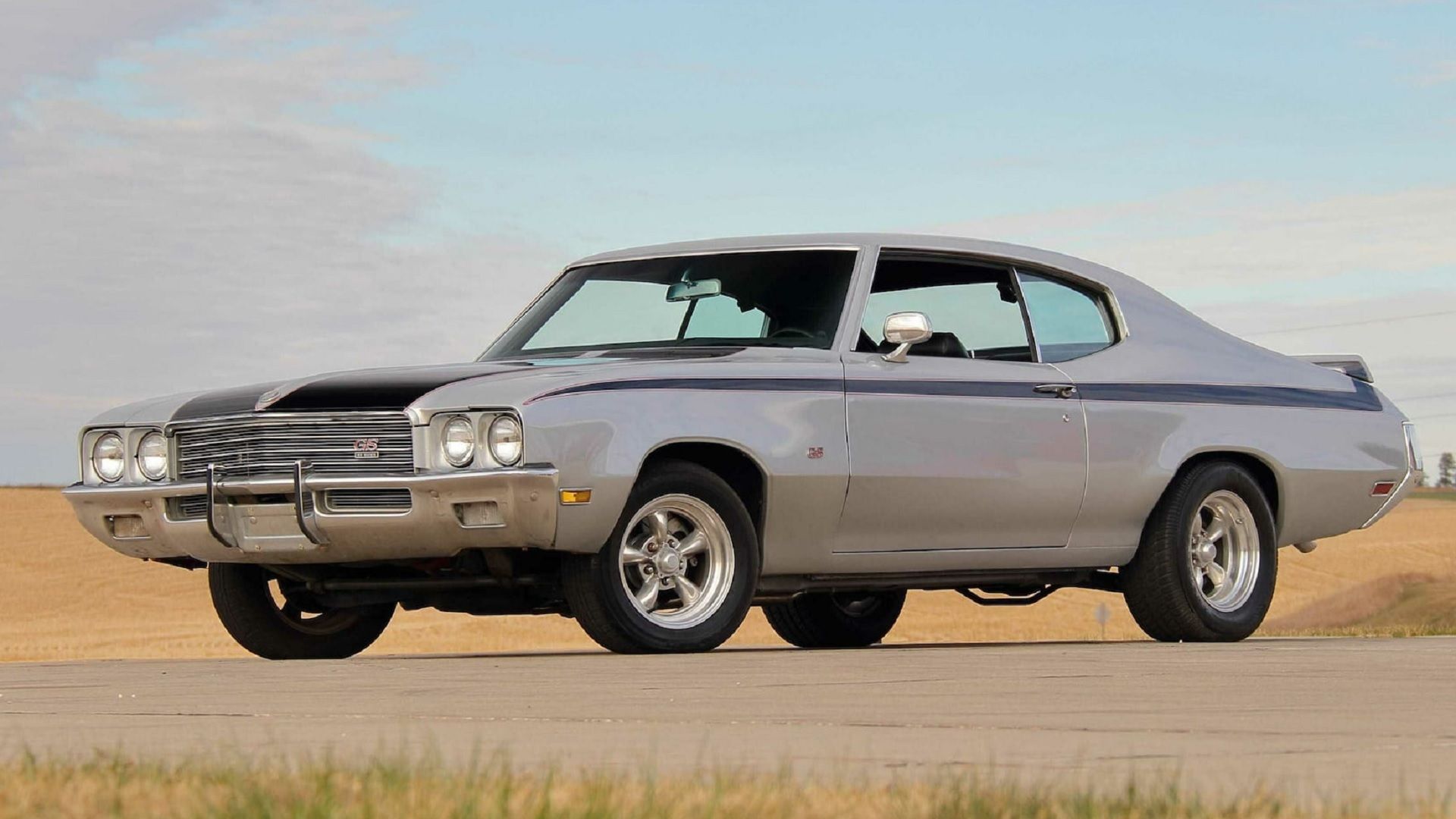
In the 1970s, Buick was largely seen as a brand tailored for an older generation, known for producing comfortable cruisers rather than high-performance machines. But all of that changed when Buick decided to jump into the muscle car era with the introduction of the GS 455. This move was made possible after General Motors lifted its ban on large engines in mid-sized cars, allowing Buick to drop a massive 455 cubic inch V8 engine into its Gran Sport model.
The result was the Buick GS 455, a car that packed serious power and performance. The standard 455 V8 churned out 350 horsepower and a staggering 510 lb-ft of torque, making it one of the most powerful engines of its time. But Buick didn’t stop there.
They offered a Stage 1 performance package, which tweaked the engine even further, boosting its power output to 360 horsepower. However, as was often the case with muscle cars from this era, the factory ratings were conservative, and the real horsepower likely exceeded 400.
The 1970 Buick GS 455 Stage 1 could launch from 0-60 mph in just 5.5 seconds, a performance feat that firmly established Buick as a player in the muscle car scene. With its blend of raw power and surprising speed, the GS 455 Stage 1 shattered the notion that Buick was only for leisurely drives. It marked a turning point for the brand, showing that they could create a car that could compete with the best of the muscle car era.
This powerful combination of performance and Buick’s signature style made the GS 455 Stage 1 an iconic model, one that helped redefine the brand’s image during the golden age of muscle cars.
The Buick GS 455 Stage 1 is a classic American muscle car that emerged during the golden era of high-performance vehicles in the early 1970s. Launched in 1970, the GS 455 Stage 1 quickly established itself as one of the most formidable contenders in the muscle car arena, combining luxurious features with raw power and performance. Renowned for its robust V8 engine and aggressive styling, the GS 455 Stage 1 represents the pinnacle of Buick’s performance offerings, embodying the spirit of American automotive excellence during a transformative period in car history.
At the heart of the GS 455 Stage 1 is its legendary 455 cubic inch (7.5-liter) V8 engine, which was designed to deliver astounding power and torque. In the Stage 1 configuration, this engine produced an impressive 510 lb-ft of torque and 360 horsepower, making it one of the most powerful engines of its time. The Stage 1 package included enhancements such as a higher-performance camshaft, a revised intake manifold, and a dual exhaust system, which all contributed to improved engine efficiency and performance. This powertrain allowed the GS 455 Stage 1 to accelerate from 0 to 60 mph in just over six seconds, showcasing its impressive performance capabilities.
The GS 455 Stage 1 also boasted a well-tuned suspension system that offered excellent handling and ride quality. The car was equipped with heavy-duty shocks, larger sway bars, and specific rear springs, which helped to minimize body roll during cornering.
This setup enabled the GS to handle the powerful engine’s output while still providing a comfortable ride. Additionally, the car featured power-assisted front disc brakes, ensuring that it could stop effectively even under aggressive driving conditions. The combination of power and handling made the GS 455 Stage 1 a formidable competitor on both the street and the drag strip.
Visually, the GS 455 Stage 1 exudes an unmistakable presence with its muscular stance and aggressive styling cues. The front end features a bold grille with a distinctive Buick emblem, flanked by quad headlights that enhance its sporty appearance.
The sculpted body lines, wide wheel arches, and signature GS badging contribute to its identity as a true muscle car. The Stage 1 package also included functional hood scoops, which not only enhanced the car’s aesthetics but also provided additional airflow to the engine, further improving performance. The GS 455 Stage 1’s design is a perfect blend of elegance and aggression, making it a standout in any classic car collection.
Inside, the GS 455 Stage 1 offered a blend of comfort and sportiness that was characteristic of Buick vehicles during this era. The interior featured high-back bucket seats, a sporty steering wheel, and a driver-focused dashboard that housed a full set of gauges, including a tachometer and oil pressure gauge. Upholstery options included vinyl and cloth materials, providing a touch of luxury in a performance-oriented package. The cabin was designed to accommodate both driver and passengers comfortably, making it suitable for long drives as well as spirited weekend outings. The combination of performance and comfort made the GS 455 Stage 1 a versatile option for car enthusiasts.
Production of the GS 455 Stage 1 was limited, making it a rare find today. In 1970, approximately 3,500 units of Stage 1 were produced, contributing to its desirability among collectors. The combination of its powerful engine, impressive performance, and classic styling has solidified the GS 455 Stage 1’s status as a sought-after classic muscle car. Collectors value it not only for its performance pedigree but also for its representation of a bygone era when American automakers were pushing the limits of engineering and design.
Over the years, the Buick GS 455 Stage 1 has gained a loyal following among muscle car enthusiasts. Its reputation as a powerful performer on the road and its limited production numbers have made it a desirable collector’s item. Classic car shows and auctions often feature the GS 455 Stage 1, with well-preserved examples fetching significant sums due to their historical significance and performance capabilities. Many enthusiasts appreciate the car not only for its speed but also for its role in the muscle car wars of the late 1960s and early 1970s.
In terms of legacy, the GS 455 Stage 1 is often compared to other legendary muscle cars of its time, such as the Pontiac GTO and the Chevrolet Chevelle SS. While it may not have received the same level of mainstream recognition, the GS 455 Stage 1 carved out its niche as a performance powerhouse, often surprising those who underestimated its capabilities. Its unique blend of performance, luxury, and style continues to resonate with collectors and enthusiasts today, ensuring its place in automotive history.
The Buick GS 455 Stage 1 stands as a testament to the power and performance ethos that defined the muscle car era. With its formidable engine, impressive handling, and distinctive styling, the GS 455 Stage 1 represents the pinnacle of Buick’s performance offerings during the early 1970s.
Its rarity and legacy make it a cherished classic, appealing to those who appreciate the artistry and engineering that went into creating such an iconic vehicle. As the muscle car phenomenon continues to grab automotive enthusiasts, the Buick GS 455 Stage 1 remains a shining example of what made this era so special in American automobiles.
5) 1978 Ferrari 512 Berlinetta Boxer, A 1970s Supercar Icon

The Ferrari 512 Berlinetta Boxer, often referred to as the 512 BB, was the epitome of exotic supercars in the late 1970s. Designed by the legendary Pininfarina, this striking, wedge-shaped beauty was built to turn heads and deliver incredible performance. Its mid-mounted 5.0-liter flat-twelve engine gave it the kind of power and handling Ferrari enthusiasts dreamed of, a drivetrain that would later inspire the iconic Ferrari Testarossa of the 1980s.
With a powerful 360 horsepower and 333 lb-ft of torque, the 512 BB was a force on the road. It could go from 0-60 mph in just 5.4 seconds and had a top speed of 188 mph, an astonishing feat for its time. This level of speed and performance made the 512 BB one of the fastest cars of its era and a true driver’s car.
Despite its stunning looks and exceptional engineering, the 512 BB hasn’t reached the sky-high prices of other Ferrari 12-cylinder models from the same period. According to Hagerty, a well-maintained example can be purchased for around $210,000, making it relatively affordable compared to other Ferrari classics. The Ferrari 512 BB is a timeless symbol of Ferrari’s engineering prowess and design excellence, offering both speed and style in one unforgettable package.
The Ferrari 512 Berlinetta Boxer is a quintessential representation of Ferrari’s engineering prowess and design elegance, embodying the spirit of Italian supercars during the late 1970s and early 1980s. Introduced in 1976 and produced until 1984, the 512 BB was a significant evolution of Ferrari’s mid-engine sports cars, following the legendary 365 GT4 BB. It marked a crucial period for Ferrari as it transitioned into more advanced performance and design philosophies, establishing itself as a competitor in the growing supercar market.
At the heart of the Ferrari 512 Berlinetta Boxer is its iconic 5.0-liter flat-12 engine, a departure from the traditional V8s found in earlier models. This unique engine configuration was not only a hallmark of Ferrari engineering but also contributed to the car’s low center of gravity, enhancing its handling characteristics.
The flat-12 engine produced an impressive 360 horsepower at 6,500 RPM and 368 lb-ft of torque, allowing the 512 BB to accelerate from 0 to 60 mph in just over five seconds. This performance made it one of the fastest road cars of its time, offering exhilarating speed and power that appealed to enthusiasts and collectors alike.
The design of the 512 Berlinetta Boxer was as striking as its performance. The car featured a sleek, aerodynamic silhouette that was both modern and aggressive. Its low profile, wide stance, and distinctive pop-up headlights contributed to an unmistakable presence on the road.
The body was crafted from steel with fiberglass panels to save weight, and the overall design showcased a blend of functionality and aesthetics. The rear of the car was particularly notable, with quad taillights and a sloping rear deck that emphasized its sporty nature. The design elements not only enhanced its visual appeal but also optimized airflow, contributing to its impressive performance.
Inside the cabin, the 512 BB was focused on the driver experience while maintaining an air of luxury characteristic of the Ferrari. The interior featured plush leather seats, a driver-oriented dashboard, and a minimalist layout that prioritized functionality.
Instruments were strategically placed for easy visibility, ensuring the driver could monitor performance metrics without distraction. The interior also included high-quality materials and finishes, reflecting Ferrari’s commitment to craftsmanship and attention to detail. While not overly extravagant, the cabin offered a blend of sportiness and comfort, making it suitable for both spirited driving and longer journeys.
The engineering behind the Ferrari 512 Berlinetta Boxer showcased advanced technology for its time. The car utilized a transaxle design, which integrated the gearbox and differential into a single unit, helping to achieve better weight distribution and handling dynamics.
The suspension system featured independent front and rear setups, allowing for precise control and responsiveness during aggressive driving maneuvers. Additionally, the braking system was equipped with ventilated disc brakes, providing reliable stopping power even under demanding conditions. This combination of engineering innovations contributed to the 512 BB’s reputation as a well-rounded performance car.
Production of the Ferrari 512 Berlinetta Boxer was relatively limited, with only about 1,000 units manufactured during its production run. This rarity has made the 512 BB a sought-after classic among collectors and enthusiasts.
The car’s historical significance as a bridge between the classic Ferrari models of the 1960s and the modern supercars of the 1980s adds to its appeal. As Ferrari continued to evolve, the 512 BB paved the way for future models, demonstrating the brand’s ability to innovate while staying true to its racing heritage.
Over the years, the Ferrari 512 Berlinetta Boxer has maintained its status as a beloved classic in the automotive community. Its combination of stunning design, exhilarating performance, and unique engineering has made it a popular choice for collectors and car enthusiasts alike.
The 512 BB is often celebrated at classic car shows and events, where it draws attention for its striking looks and impressive presence. Many owners take pride in maintaining and restoring these vehicles, ensuring that their legacy endures for future generations.
In terms of legacy, the 512 Berlinetta Boxer has left an indelible mark on Ferrari’s history and the automotive world as a whole. Its flat-12 engine configuration would influence future models, and its design language can be seen in various subsequent Ferrari cars. The 512 BB’s significance extends beyond performance; it represents a key moment in Ferrari’s evolution as a manufacturer of high-performance sports cars, showcasing the brand’s ability to innovate and adapt in a rapidly changing automotive.
The Ferrari 512 Berlinetta Boxer is a remarkable fusion of performance, design, and engineering that encapsulates the essence of the Ferrari brand. With its powerful flat-12 engine, stunning aesthetics, and advanced technology, the 512 BB stands as a testament to Ferrari’s commitment to excellence.
As a classic supercar that has captured the hearts of enthusiasts and collectors, the 512 Berlinetta Boxer remains a shining example of Italian automotive artistry and a significant chapter in Ferrari’s storied legacy. Its impact on the world of performance cars continues to be felt today, making it a revered icon among automotive aficionados.
4) 1972 Pontiac Firebird Trans Am 455 HO: Muscle and Everyday Usability
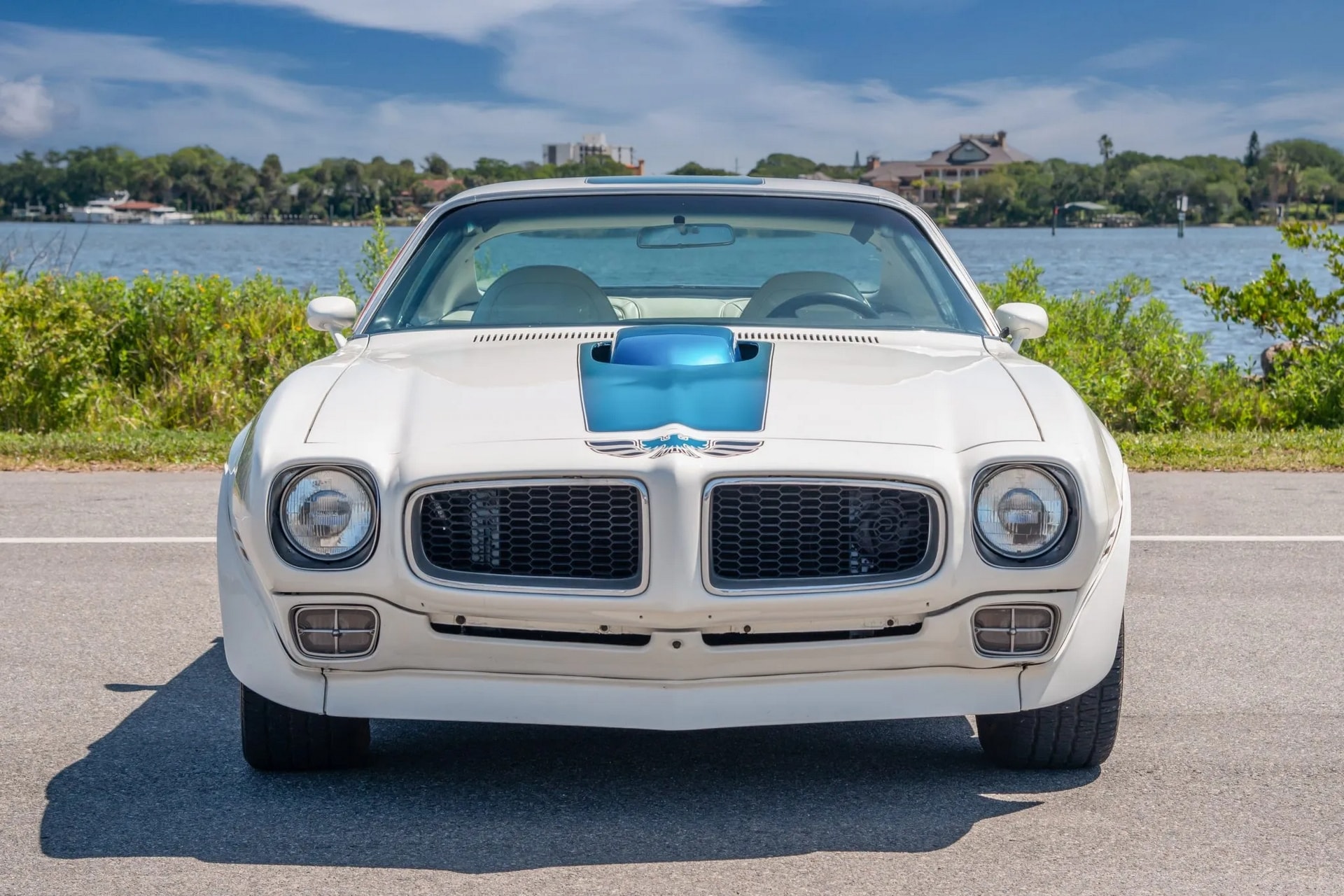
The 1972 Pontiac Firebird Trans Am 455 HO was a perfect blend of muscle car performance and everyday practicality. Although its aggressive, racetrack-ready looks suggested otherwise, this second-generation Trans Am was versatile enough to be your daily driver. Whether you wanted to take it for a thrilling spin or simply run an errand, the Firebird could handle both with ease.
Under the hood, Pontiac equipped this model with a powerful 7.5-liter V8 engine, producing a respectable 300 horsepower and 415 lb-ft of torque, despite tightening emissions regulations at the time. This raw power allowed the Firebird to achieve an impressive 0-60 mph time of 5.4 seconds and complete a quarter-mile in 13.8 seconds. Only 1,286 of these models were produced in 1972, making it a rare gem in Pontiac’s lineup.
Buyers had the option of a three-speed automatic transmission or the close-ratio M22 four-speed manual, which offered more control over the vehicle’s power. Inside, the Trans Am 455 HO featured high-backed bucket seats and an engine-turned aluminum dashboard, combining comfort with a touch of sportiness.
The 1972 Firebird Trans Am 455 HO remains an iconic muscle car, offering both powerful performance and the convenience of everyday drivability.
3) 1970 Ford Mustang Boss 429 The Legendary Muscle Car
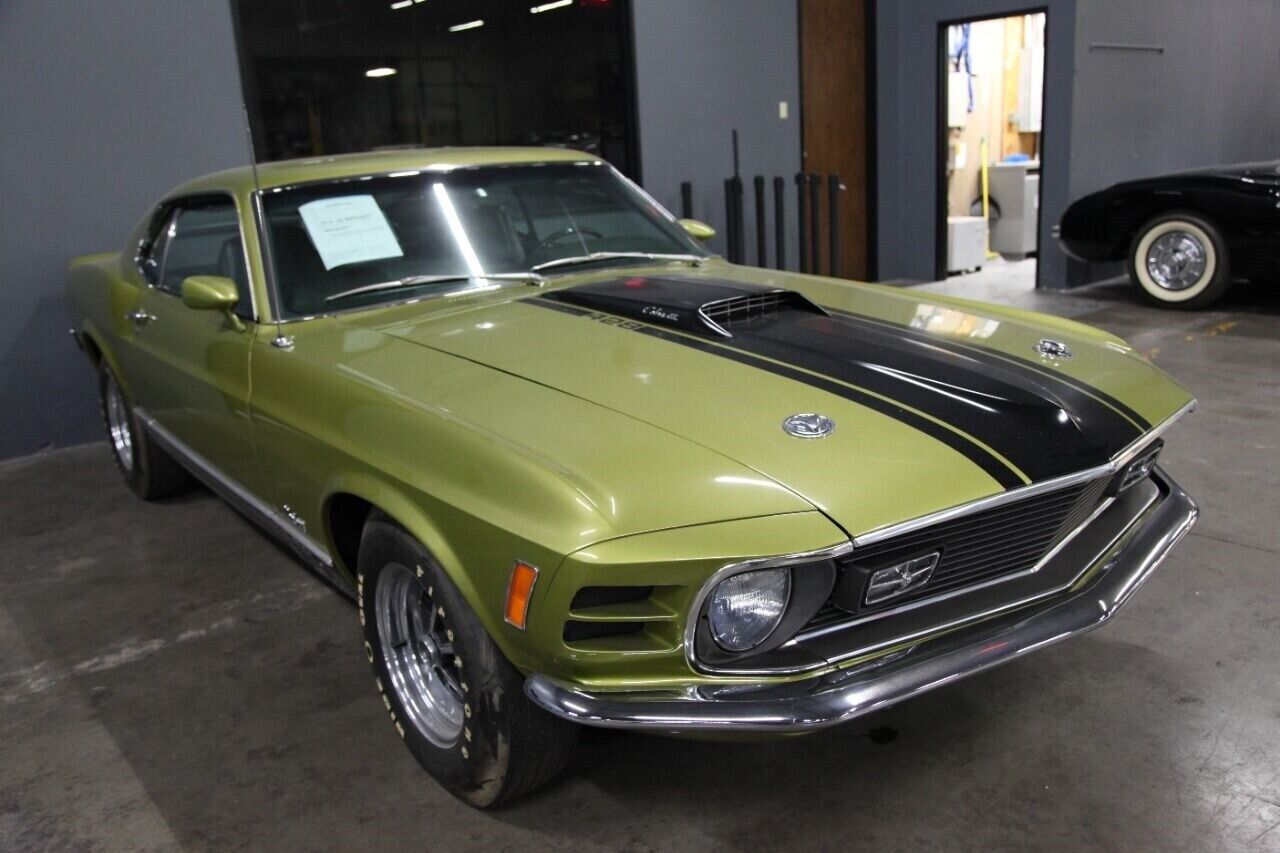
The 1970 Ford Mustang Boss 429 is a true legend in muscle cars, renowned for its impressive performance and rarity. One of the standout features of the Boss 429 is its powerful engine—a massive 429 cubic inch V8. This beast was equipped with a single Holley four-barrel carburetor, which allowed it to generate 375 horsepower right off the factory floor. However, many enthusiasts believe the true output was closer to 500 horsepower, and with some modifications, this engine could easily push up to 600 horsepower, showcasing its potential for performance.
Produced in limited numbers, the Boss 429 was created to meet NASCAR’s homologation requirements, which mandated that at least 500 road-legal versions of the car be built. Ultimately, only 1,359 of these iconic vehicles were made, making them highly sought after by collectors and enthusiasts alike.
Aside from its impressive power, the Boss 429 is also known for its strong torque, rated at 490 lb-ft. This combination of horsepower and torque enables the Mustang to reach 0-60 mph in just 5.3 seconds, and it can complete a quarter-mile run in approximately 12.3 seconds.
With its aggressive styling, powerful engine, and limited production numbers, the 1970 Ford Mustang Boss 429 has become one of the most desirable muscle cars of all time. Its place in automotive history is cemented, as it continues to grab car enthusiasts and collectors around the world, representing the peak of American muscle car performance in the 1970s.
2) 1970 Plymouth Superbird The Iconic Muscle Car
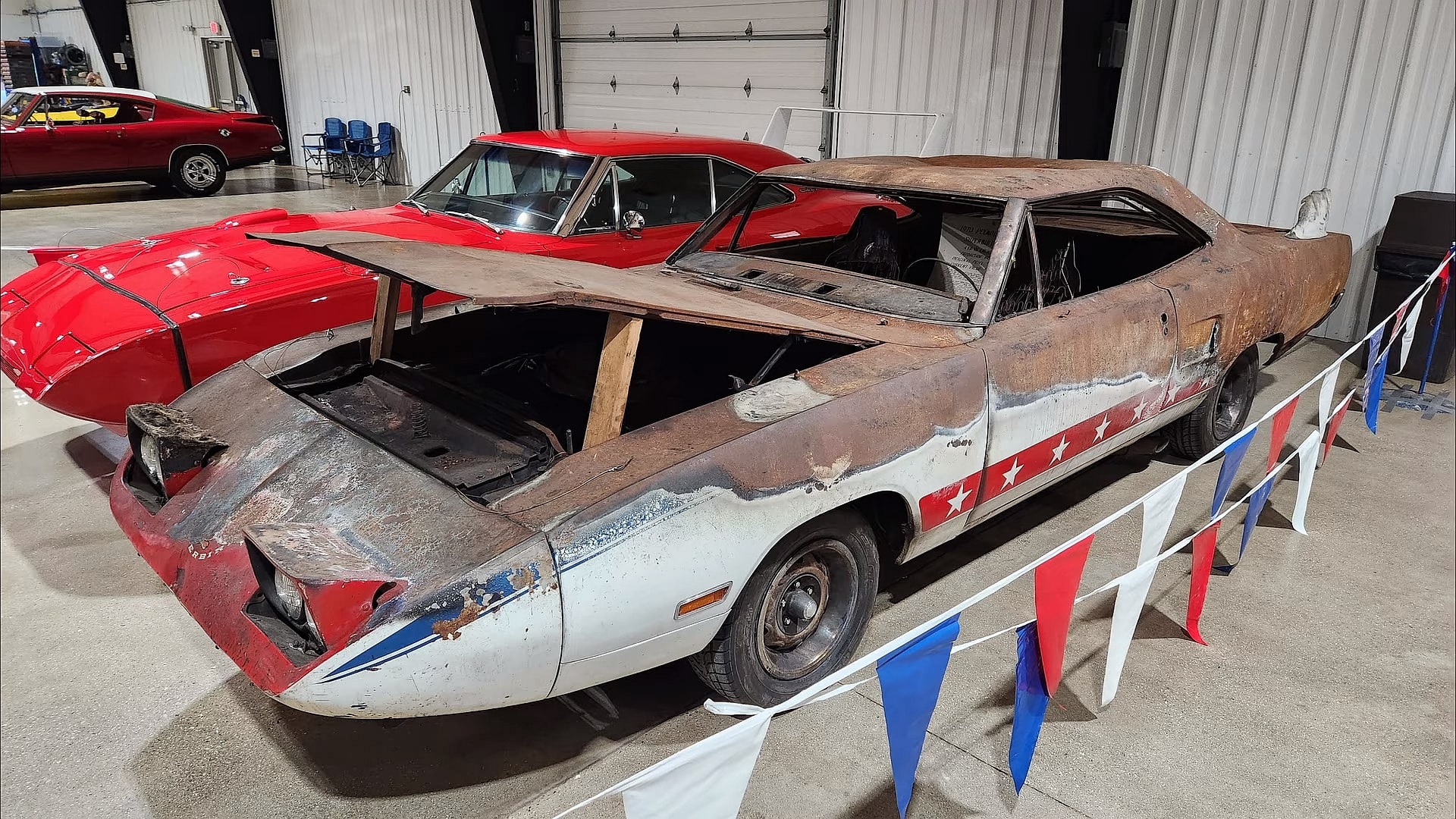
The 1970 Plymouth Superbird is an iconic muscle car celebrated for its bold design and impressive performance. Known for its eye-catching looks, the Superbird featured a striking giant rear wing that wasn’t just for show; it served a crucial purpose by enhancing downforce and stability at high speeds. Combined with its unique nose cone design, the Superbird achieved an impressive low drag coefficient of 0.29, making it one of the most aerodynamic cars of its time.
On the racetrack, the Superbird made a name for itself during the 1970 NASCAR season. Legendary driver Richard Petty famously pushed this car to reach speeds close to 200 mph. Its outstanding performance prompted NASCAR to introduce new regulations to limit aerodynamic modifications and engine sizes, showcasing the Superbird’s dominance in racing.
When it came to engine options, the 1970 Plymouth Superbird offered a selection of powerful choices. The standard engine was the 440 Super Commando four-barrel V8, producing a solid 375 horsepower and 480 lb-ft of torque. For those seeking even more power, the 440 Super Commando Six-Barrel V8 delivered 390 horsepower and 490 lb-ft of torque. However, the true powerhouse of the lineup was the big-block 426 Hemi V8, equipped with two Carter Aluminum Four Barrel carburetors. This engine cranked out an astonishing 425 horsepower and 490 lb-ft of torque, making it the ultimate choice for performance enthusiasts.
With its combination of striking looks, remarkable engineering, and racing pedigree, the 1970 Plymouth Superbird has earned its place in automotive history. Whether on the racetrack or the open road, this muscle car continues to grab enthusiasts and collectors alike, representing the peak of American automotive performance in the 1970s.
1) 1978 Porsche 911/930 Turbo The Legendary ‘Widowmaker’
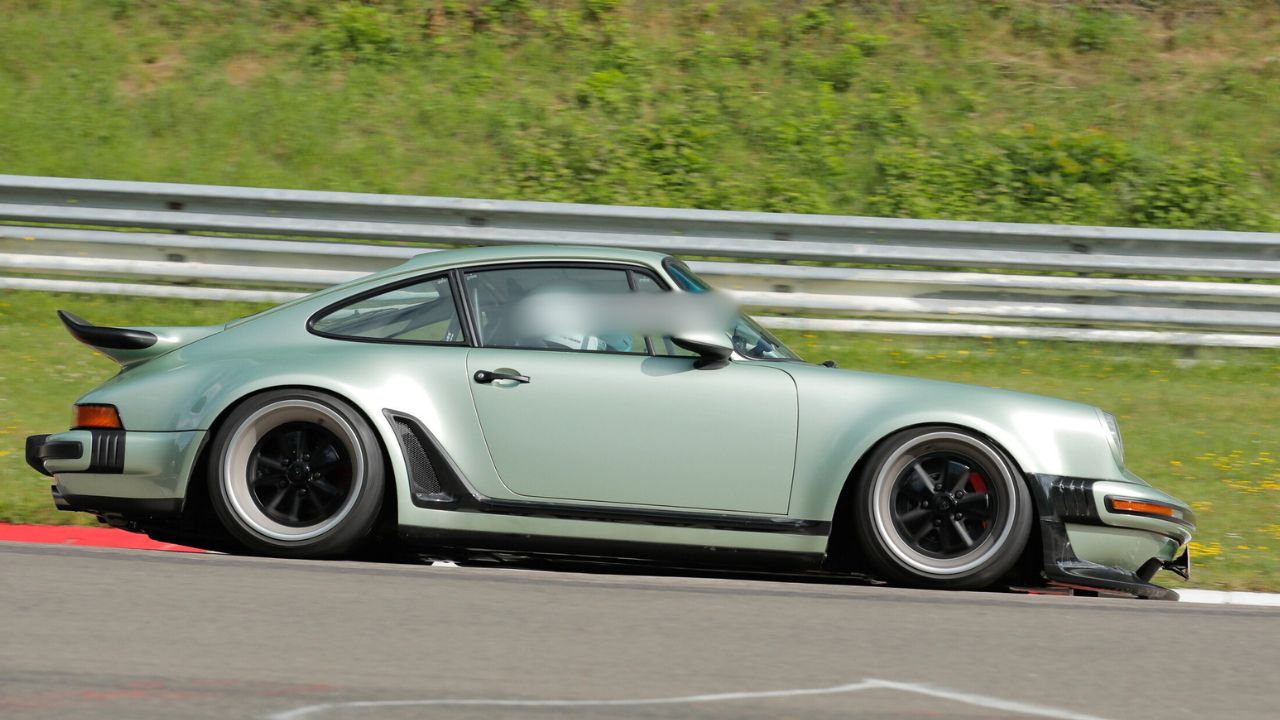
The 1978 Porsche 911/930 Turbo, often referred to as the ‘Widowmaker,’ is a legendary sports car that commands attention on the road. This powerful vehicle is known for its distinct performance and unique design, making it a favorite among car enthusiasts.
At the heart of the 930 Turbo lies a robust 3.3-liter flat-six engine that delivers an impressive 300 horsepower and 317 lb-ft of torque. This turbocharged powerhouse allows the car to accelerate from 0 to 60 mph in just 4.9 seconds and complete a quarter-mile in approximately 13.5 seconds. The thrilling acceleration and raw power provide a driving experience like no other, but they also require respect and skill from the driver.
The design of the 930 Turbo set it apart from the standard 911, as it features a wider body—12 centimeters wider, to be exact. This extra width, along with the iconic black fins fitted to the front of the rear arches, adds to the car’s aggressive stance and helps manage high-speed performance. When it was first launched in 1975, the Turbo had a slightly less powerful 260 hp engine. However, by 1978, Porsche increased the engine’s displacement from 3.0 liters to 3.3 liters, enhancing performance and creating an even more thrilling ride.
Another notable feature of the 930 Turbo is its distinct rear wing, which is larger than its predecessor’s. This wing not only contributes to the car’s iconic look but also plays a crucial role in aerodynamics by accommodating the intercooler. Additionally, the exhaust system of the Turbo is designed with a double tailpipe, allowing exhaust gases to escape through the left pipe when the turbocharger’s boost pressure control valve opens.
The 1978 Porsche 911/930 Turbo remains an iconic symbol of automotive performance and design. Its combination of power, distinctive styling, and rich history make it a highly sought-after classic car. The reputation of the ‘Widowmaker’ is not just a nickname; it serves as a reminder of the skill required to harness its incredible capabilities on the road.

